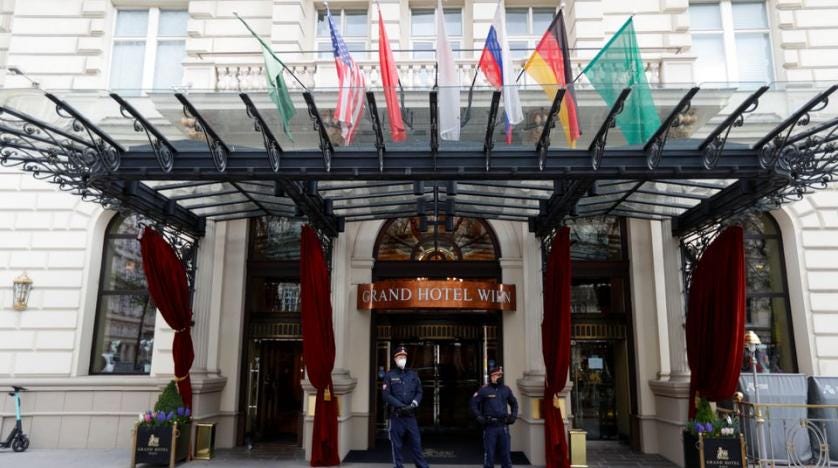Slow progress at third round of Vienna Iran talks
'Yes, but very slowly,' diplomat at the talks says on if differences between the parties are narrowing.

Progress is apparently slow to date at the third round of international talks on a possible US and Iranian return to full compliance with the 2015 Iran nuclear deal, which got underway in Vienna on Tuesday.
“It is fair to say that we are not on the cusp of any breakthrough,” State Department spokesman Ned Price told journalists at the State Department today (April 29).
“Yes, but very slowly,” a diplomat at the talks said today, when asked if positions between the parties are moving closer together. He said he would refrain from attributing the slow pace to one side or another, because the issues involved are complex. “This is normal.”
“It’s going,” another official at the talks said today, when asked how they were going.
“Major issues remain,” Ali Vaez, Iran project director at the International Crisis Group, who consults frequently with the US and other negotiators, told me.
The US delegation, led by Rob Malley, was expecting this round to get a better sense of what the Iran team heard when they took the proposed US package back to Tehran last week, Vaez said.
“After the second round, a lot depended on the reaction in Tehran to the US package on the sanctions the US wants to keep, the ones that are up for debate, and the ones they would be prepared to lift,” Vaez said. “The ongoing third round should clarify a lot of questions, but many difficult issues remain.
“It is hard to be very optimistic that a quick breakthrough is on the cards,” Vaez said. “But none of the obstacles appear insurmountable either.”
American officials, briefing on the talks after they wrapped up last week, sounded decidedly cautious, and sought to push back on raised expectations fueled by some reports and Iranian official statements that suggested a deal was closer than the US team said it assessed it was.
“We made some progress, but we’re not in a situation that’s radically different from where we were at the conclusion of round one,” a senior State Department official, speaking not for attribution, told journalists on a call on April 21.
“What we did achieve is greater clarification,” the US official continued. But, he added, “clarification doesn’t necessarily mean consensus. There still are disagreements and, in some cases, pretty important ones.”
“So we’re not near the conclusion of these negotiations,” the senior State Department official again cautioned. “The outcome is still uncertain.”
“I think the deal is not close,” Vali Nasr, dean of the Johns Hopkins School of Advanced International Studies and a former State Department official, told me he was hearing from contacts at the talks on April 19. “I don’t think their positions are close.”
The U.S. official said they had provided the Iranians “with a number of examples of the kind of sanctions that we believe we would need to lift in order to come back into compliance, and the sanctions that we believe we would not need to lift…. And then a third category, which are the difficult cases… because this is a complex process, but also because the Trump administration deliberately and avowedly imposed sanctions… purely for the purpose of preventing or hindering a return to..compliance with the JCPOA. So that has made it more difficult.”
